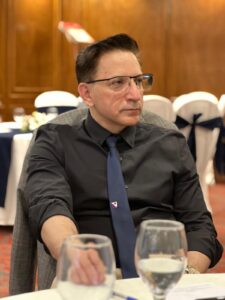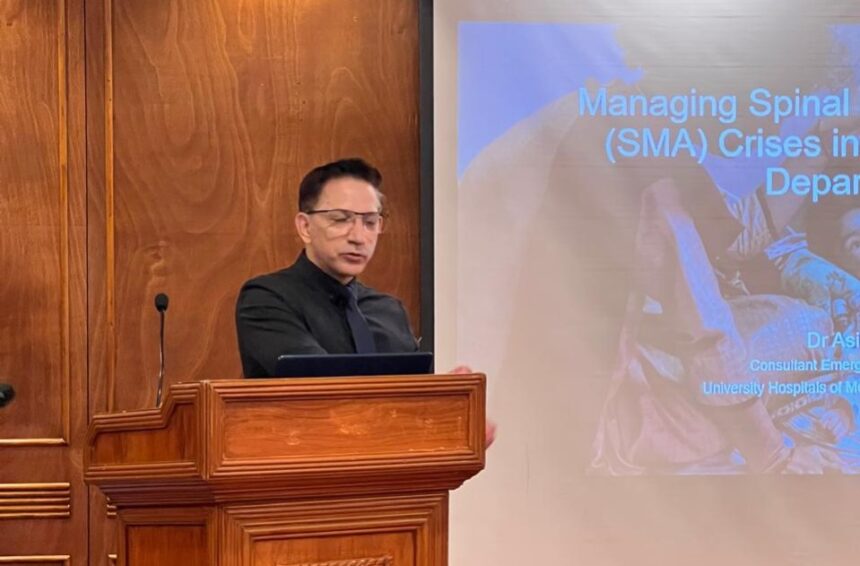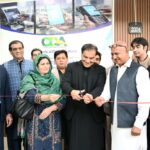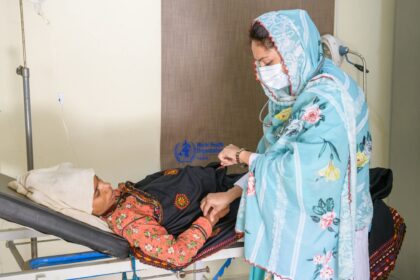Islamabad — Dr. Asim Ijaz, a UK-based Consultant in Emergency Medicine and faculty member of the Royal College of Emergency Medicine (RCEM) and cHALO, delivered a pivotal presentation during the Strive Foundation’s national event on Spinal Muscular Atrophy (SMA). His specialized teaching session, titled “Acute Assessment and Management of Patients with Spinal Muscular Atrophy (SMA) in the Emergency Department,” focused on educating Pakistan’s emergency physicians on the urgent need for specialized SMA crisis management training.
Dr. Asim began his address by clarifying that while he is not an SMA specialist, his expertise lies in managing acute emergencies that often bring SMA patients to hospitals. He explained that the lack of proper training among emergency doctors in Pakistan frequently results in poor crisis handling, which can have fatal outcomes. He stressed that SMA patients are physiologically fragile and require tailored, cautious care from the moment they enter the emergency department.
Explaining the delicate nature of SMA, Dr. Asim described these patients as “a glass already 90 percent full,” meaning that even a minor stressor — such as a common cold or slight dehydration — can lead to catastrophic failure. He underscored that respiratory failure remains the most critical and life-threatening issue in these cases, accounting for 80 to 90 percent of deaths among children with SMA.
Dr Asim Ijaz Urges Emergency Medicine Reforms
Dr. Asim issued a stern warning against relying solely on oxygen saturation levels when evaluating SMA patients, calling it a misleading indicator of stability. He shared an example of a child who presented with 95 percent oxygen saturation but showed signs of paradoxical breathing — an indication of impending respiratory collapse that went unnoticed because doctors focused only on the oxygen reading. He urged clinicians to look beyond numerical data and rely on clinical observation and patient-specific cues.

Highlighting the central role of families in managing SMA, Dr. Asim described caregivers as “the most valuable diagnostic tool.” He said that parents know the patient’s normal baseline better than anyone and can identify early warning signs that machines might miss. He emphasized that dismissing caregivers’ concerns can delay critical intervention and lead to preventable loss of life.
Dr. Asim also discussed several dangerous but common medical errors that emergency physicians must avoid. He emphasized that sedatives and respiratory depressants are particularly hazardous for SMA patients. Recalling a real-life case, he explained how an eight-year-old patient suffered respiratory arrest and hypoxic brain injury after being administered a sedative to control anxiety. He warned doctors to avoid any drug that suppresses breathing, including certain cough syrups, and instead use non-sedative methods to calm patients.
Another major concern he addressed was the risk of fluid overload. Due to their low muscle mass, SMA patients have a “dry weight” that is significantly lower than their apparent body weight. Administering standard fluid boluses based on actual weight, he cautioned, can lead to fluid overload and worsen respiratory distress. He compared it to “overwatering a small plant in a large pot.” Dr. Asim recommended giving smaller, reassessed doses — around 5 ml/kg at a time — and monitoring the patient closely after each administration.
To help emergency doctors handle SMA crises systematically, Dr. Asim introduced the “SMART” mnemonic — a five-step framework that stands for Support breathing and manage secretions, Metabolic and hydration state, Airway (assuming risk of aspiration), Review baseline and seek help early, and Trigger (identify what initiated the crisis, such as infection, trauma, or dehydration). He said that this structured approach allows doctors to stabilize patients quickly while preventing the most common causes of deterioration.
Proposing practical reforms for Pakistan’s healthcare system, Dr. Asim recommended introducing a national “SMA Alert Card.” This one-page document, he explained, should be carried by SMA patients or their families and contain key information such as the diagnosis, baseline observations, and vital “do’s and don’ts” for emergency care. The goal, he said, is to ensure that even in small hospitals or rural clinics, doctors have immediate access to life-saving information when a crisis occurs.
Dr. Asim concluded his address by emphasizing the importance of collaboration among families, medical professionals, and organizations like the Strive Foundation. He said that a strong partnership between these groups could build an ecosystem of support that saves lives and strengthens medical preparedness nationwide. Closing his talk, he left the audience with a defining statement: “We are not just treating a crisis. We are protecting a future. So let’s be the clinicians who understand that difference.”











